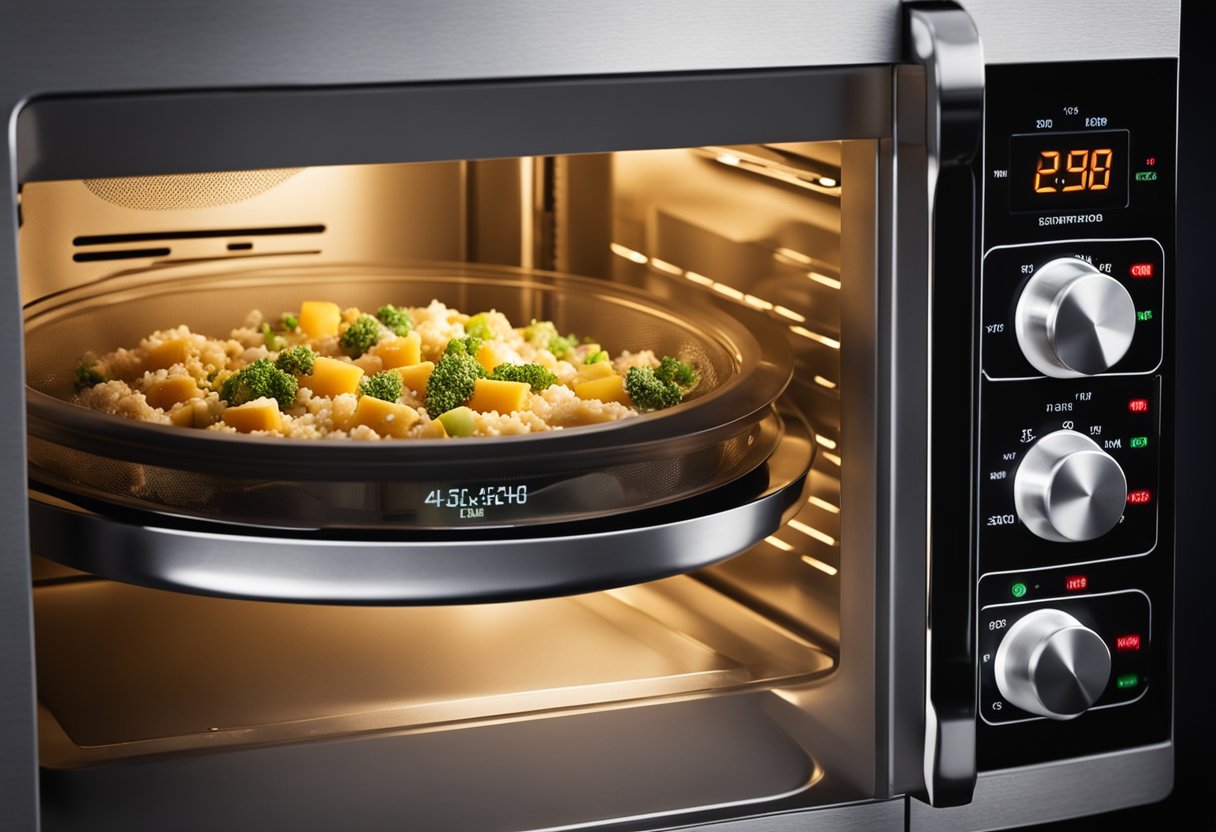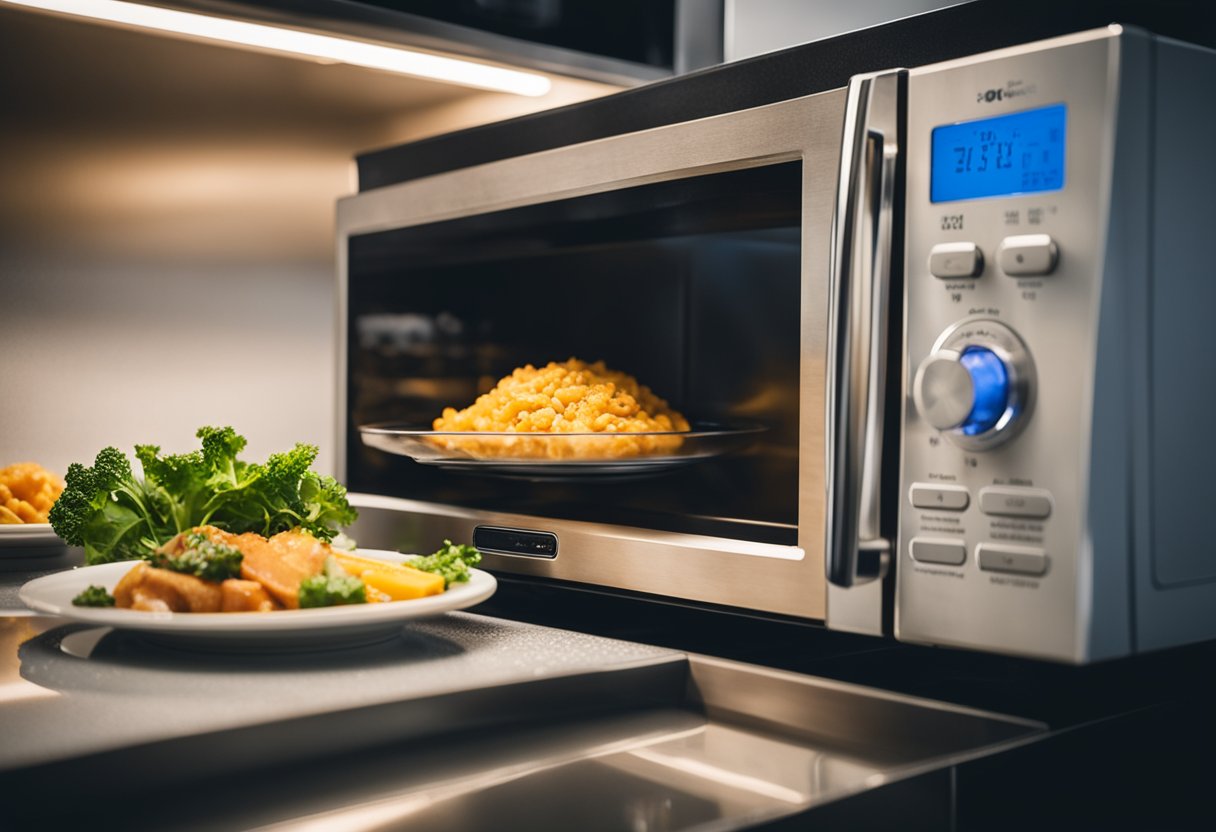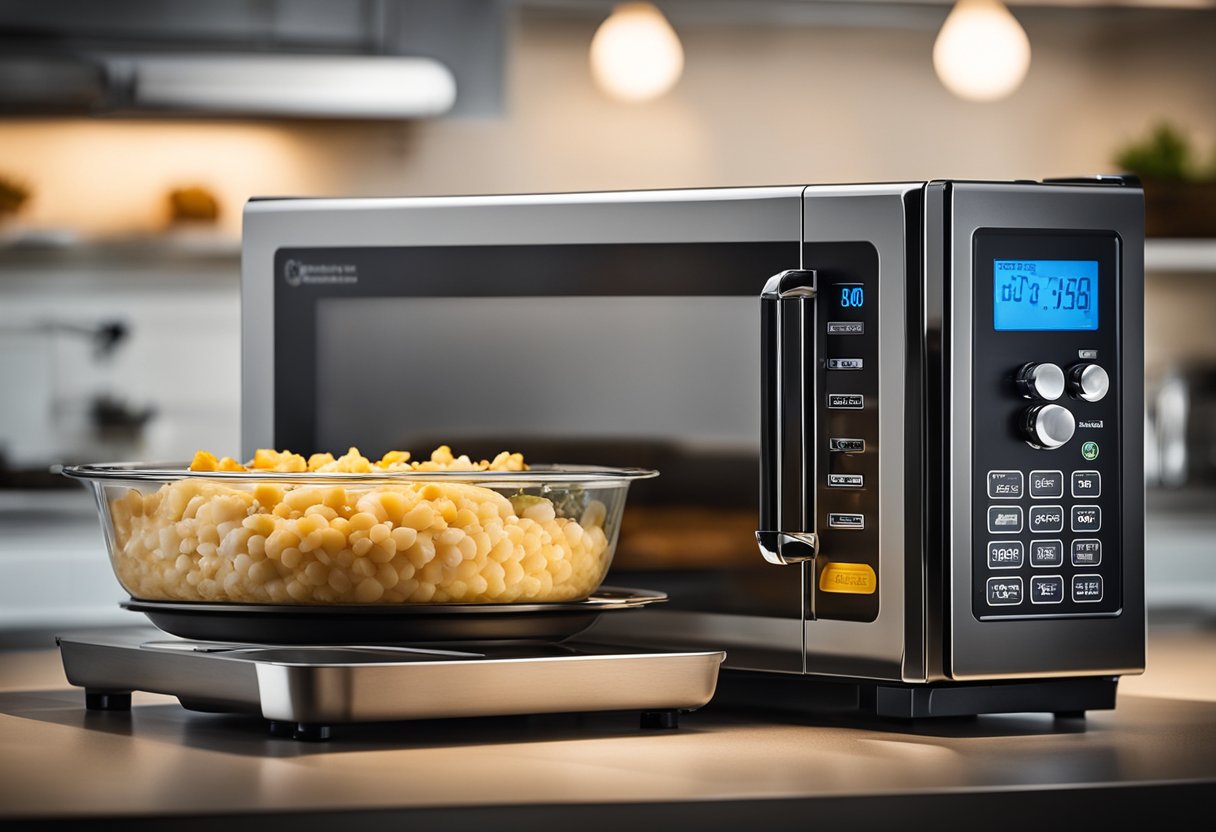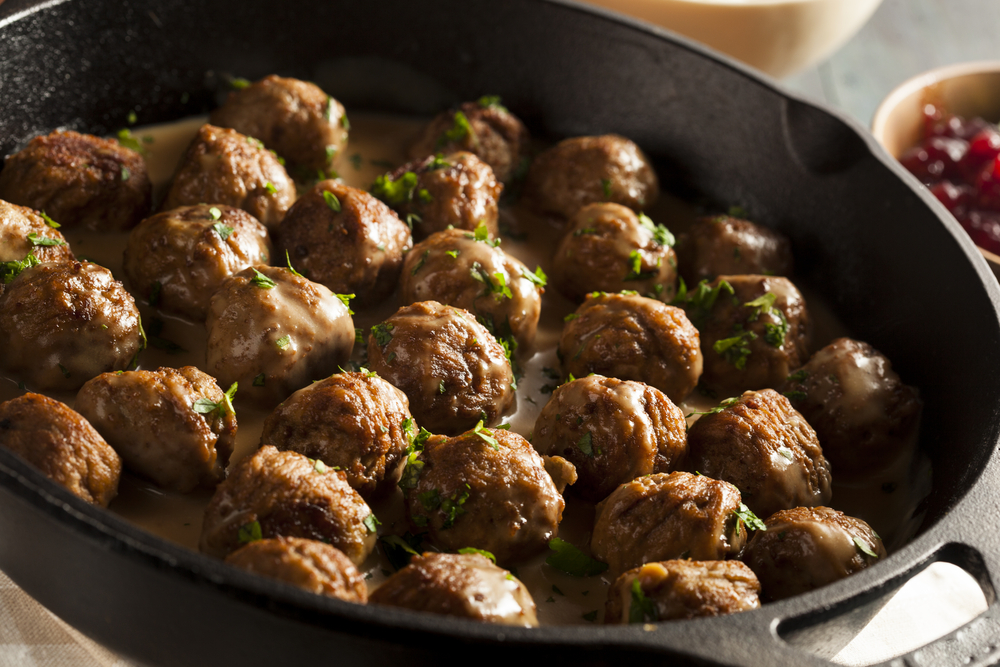As a busy professional, I don’t always have the time or energy to cook a healthy meal from scratch. That’s why I turn to meal delivery services like Factor. Factor provides delicious, chef-prepared meals that are delivered straight to my door.
But what do I do when I want to enjoy one of these meals but it’s been sitting in the freezer? In this article, I will share my tips and tricks for reheating frozen Factor meals.

First and foremost, preparation is key when it comes to reheating frozen meals. Before you even put the meal in the microwave or oven, be sure to remove all packaging and transfer the contents to a microwave-safe dish or container.
This will ensure even heating throughout the meal. Additionally, be sure to read the instructions on the packaging of your frozen Factor meal to determine the recommended reheating method and time.
If the instructions suggest thawing before reheating, transfer the frozen meal to the refrigerator and let it thaw overnight. Thawing ensures more even reheating and better quality of the meal.
Key Takeaways
- Proper preparation is key to reheating frozen Factor meals.
- Always follow the instructions on the packaging for the best results.
- Thawing the meal before reheating ensures more even reheating and better quality of the meal.
Preparation for Reheating

When it comes to reheating frozen factor meals, preparation is key to ensure that the meal is safe to eat and tastes delicious.
In this section, I will go over two important aspects of preparation: thawing frozen factor meals and portioning meals for reheating.
Thawing Frozen Factor Meals
Before reheating any frozen factor meal, it is important to thaw it properly. Thawing the meal properly can prevent freezer burn and ensure even heating throughout the meal. There are two ways to thaw frozen factor meals: in the refrigerator overnight or in cold water.
Thawing in the refrigerator overnight is the recommended method. Simply take the frozen meal out of the freezer and place it in an airtight container in the refrigerator.
Allow the meal to thaw overnight or for at least 8-10 hours. Thawing in the refrigerator is the safest method and helps to maintain the quality of the meal.
If you need to thaw the meal quickly, you can do so in cold water. Fill a large bowl or sink with cold water and place the frozen meal in a sealed plastic bag. Submerge the bag in the water and change the water every 30 minutes until the meal is thawed.
This method is faster than thawing in the refrigerator but requires more attention to ensure the meal stays safe to eat.
Portioning Meals for Reheating
Before reheating a frozen factor meal, it is important to portion it properly. Portioning the meal can help to ensure even heating throughout and prevent overcooking or undercooking.
If you are meal prepping, portioning the meal before freezing can also make it easier to reheat later.
To portion a meal for reheating, start by dividing the meal into even portions. Use a kitchen scale to measure out the portions if necessary.
Place each portion in an airtight container or freezer bag and label it with the date and contents. This will make it easier to grab a portion and reheat it later.
In conclusion, preparation is key when it comes to reheating frozen factor meals. Thawing the meal properly and portioning it for reheating can help to ensure a safe and delicious meal.
By following these tips, you can enjoy your frozen factor meals without sacrificing quality or taste.
Reheating Techniques
https://www.youtube.com/watch?v=cU5Ds6SGztY
When it comes to reheating frozen Factor meals, there are a few techniques you can use to get the best results. Here are the most common reheating methods:
Microwave Reheating
The microwave method is the quickest and easiest way to reheat your frozen Factor meals. To do this, remove the packaging from your desired meal and place it in a microwave-safe dish.
Cover the dish with a microwave-safe lid or microwave-safe plastic wrap and heat on high for 2-4 minutes. Check the internal temperature of the food with a food thermometer to ensure it has reached at least 165°F (74°C) before serving.
Oven Reheating
If you prefer a more oven-baked taste and texture, you can also reheat your Factor meals in the oven. To do this, preheat your oven to 350°F (175°C) and remove the packaging from your desired meal.
Place the meal in an oven-safe dish and cover with aluminum foil. Heat for 20-30 minutes, or until the internal temperature of the food reaches at least 165°F (74°C).
Stovetop Reheating
Stovetop reheating is another option for reheating your Factor meals. To do this, remove the packaging from your desired meal and transfer it to a saucepan.
Add a small amount of water or broth to the pan and heat over medium heat, stirring occasionally, until the internal temperature of the food reaches at least 165°F (74°C).
No matter which reheating method you choose, it is important to use a food thermometer to check the internal temperature of the food before serving. This will ensure that the food is safe to eat and has been reheated to the appropriate temperature.
Handling Specific Meal Types
When it comes to reheating specific meal types, there are a few things to keep in mind to ensure that your Factor meal is heated evenly and thoroughly.
Here are some tips for reheating soups and stews, rice and pasta dishes, and casseroles and meats.
Reheating Soups and Stews
Soups and stews are some of the easiest meals to reheat. Simply transfer the contents of the meal to a microwave-safe bowl and cover with a microwave-safe lid or plastic wrap.
Heat on high for 2-3 minutes, stirring occasionally, until heated through. If the soup or stew is too thick, you can add a splash of water or broth to thin it out.
Reheating Rice and Pasta Dishes
Rice and pasta dishes can be a bit trickier to reheat, as they tend to dry out easily. To prevent this, add a small amount of water or broth to the dish before reheating.
You can also cover the dish with a damp paper towel or microwave-safe lid to trap in moisture. Heat on high for 2-3 minutes, stirring occasionally, until heated through.
Reheating Casseroles and Meats
Casseroles and meats can take a bit longer to reheat, as they are often thicker and denser than other meal types. To ensure even heating, transfer the contents of the meal to a microwave-safe dish and cover with a microwave-safe lid or plastic wrap.
Heat on high for 3-5 minutes, stirring occasionally, until heated through. If the meal is still cold in the middle, you can continue heating in 1-minute increments until fully heated.
Overall, reheating Factor meals is a simple process that can be done quickly and easily in the microwave. By following these tips for specific meal types, you can ensure that your meal is heated evenly and thoroughly every time.
Ensuring Food Safety
When reheating frozen Factor meals, it is crucial to ensure that the food is safe to eat. One of the best ways to ensure this is by using a food thermometer.
According to the Food Safety and Inspection Service, it is essential to check the internal temperature of meat and poultry products to determine whether they are safe to eat.
Beef, pork, lamb, and veal (steaks, roasts, and chops) should be reheated to an internal temperature of 145 degrees Fahrenheit with a three-minute rest time.
Ground meats (beef, pork, lamb, and veal) should be reheated to an internal temperature of 160 degrees Fahrenheit.
It is also important to note that reheating frozen Factor meals in hot water or a microwave may not always guarantee that the food is safe to eat.
To ensure that the food is heated evenly, it is recommended to transfer the contents of the meal into a microwave-safe dish or container with ample space, as mentioned in Reheated.org. This allows for even heating throughout the meal.
When storing frozen Factor meals, it is best to use freezer-safe zip-top bags or freezer-safe containers, as suggested by Foodsguy.com.
Frozen Factor meals are good for around three months. However, it is best to adhere to the recommended storage time on the packaging for optimal quality and safety.
In summary, reheating frozen Factor meals requires careful attention to ensure food safety. Using a food thermometer, transferring the contents of the meal into a microwave-safe dish or container, and storing the meals in freezer-safe bags or containers are some of the best practices to ensure that the food is safe to eat.
Maximizing Meal Quality
As someone who meal preps and relies on frozen meals for convenience, I understand the importance of reheating food properly to maintain its quality.
Frozen Factor meals are no exception, and there are a few things you can do to ensure that your reheated meal tastes just as good as it did when it was fresh.
First and foremost, be aware that reheating frozen meals can cause some flavor changes. This is because freezing and reheating can affect the texture and moisture content of the food, which can impact the overall taste.
However, there are ways to mitigate this. For example, adding a splash of water or broth to the meal before reheating can help prevent it from drying out and losing flavor.
When reheating your frozen Factor meal, be sure to follow the instructions on the packaging carefully. Different meals may require different reheating methods and times, so it’s important to read the instructions thoroughly.
If the instructions suggest thawing the meal before reheating, be sure to do so. Thawing ensures more even reheating and can help maintain the meal’s texture and flavor.
In terms of nutrition, freezing and reheating food can cause some nutrient loss. However, this loss is typically minimal and should not be a major concern.
Frozen Factor meals are designed to be healthy and nutritious, so even with some nutrient loss, they are still a great option for convenient and healthy meals.
Finally, keep in mind that frozen meals should not be stored for more than three months. After this time, the quality of the meal may decline, and it may not be safe to eat. To maximize the quality of your frozen Factor meals, be sure to use them within three months of purchase.
Overall, reheating frozen meals can be a convenient and tasty way to enjoy healthy meals. By following the instructions carefully, adding moisture if needed, and being mindful of nutrient loss and storage time, you can maximize the quality of your reheated frozen Factor meals.
Frequently Asked Questions

What is the recommended method to reheat a frozen Factor meal?
The recommended method to reheat a frozen Factor meal is to use a microwave. Take your desired frozen meal out of its packaging, ensuring there are no plastic coverings left on.
Place the contents of the meal into a microwave-safe dish or container with ample space. This allows for even heating throughout. Heat the meal on high for 3-5 minutes, depending on the wattage of your microwave. Stir halfway through to ensure even heating.
Can Factor meals be microwaved directly from frozen?
Yes, most frozen Factor meals can be reheated from frozen. However, follow the instructions on the packaging for best results.
How long should I heat a frozen Factor meal for optimal taste?
For optimal taste, heat the frozen Factor meal for 3-5 minutes, depending on the wattage of your microwave. Stir halfway through to ensure even heating.
Are there any specific instructions for thawing Factor meals before reheating?
Factor meals do not need to be thawed before reheating. They can be reheated directly from frozen. However, if you prefer to thaw the meal before reheating, place it in the refrigerator overnight, or use the defrost setting on your microwave.
What is the shelf life of Factor meals when stored in the freezer?
Factor meals can be stored in the freezer for up to 6 months. Be sure to check the expiration date on the packaging before consuming.
Is it safe to consume a Factor meal past its expiration date if it was frozen?
No, it is not safe to consume a Factor meal past its expiration date, even if it was frozen. Be sure to check the expiration date on the packaging before consuming.







